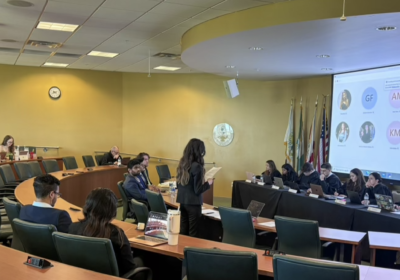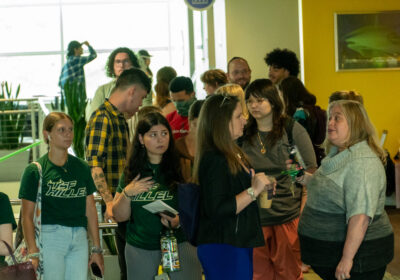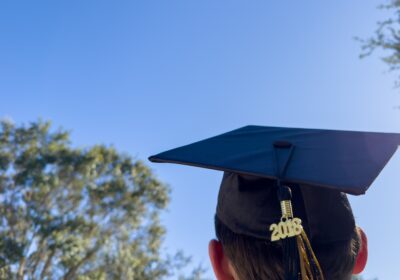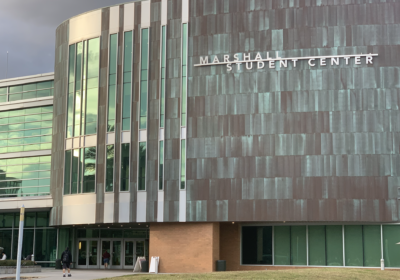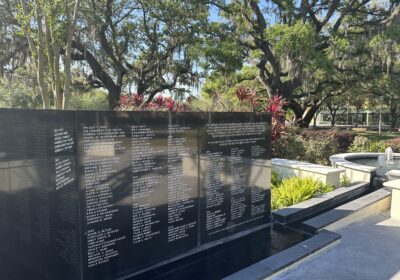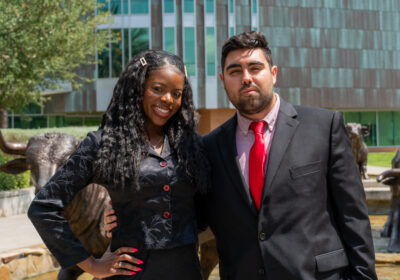USF performing arts entertain behind screens and masks for fall events
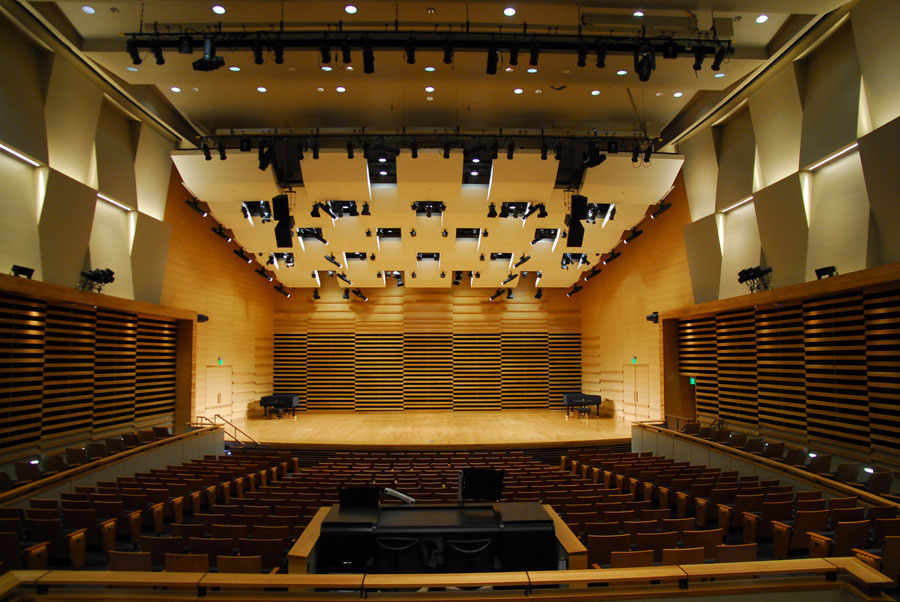
From sitting in a theater to behind a computer, COVID-19 has changed the way the performing arts are viewed and done across the nation, and USF is no exception.
Instead of dimly lit rooms and a packed house with people enjoying the performing arts, performers will look out into an empty theater and into a camera lens to an unseen audience viewing from their homes.
For dancers, actors, musicians and audience members, the limitations have proven to be a quandary for how fall semester performances will take place as well as how student performers interact.
“It is incredibly difficult to make things remotely,” Dean of the College of Arts Chris Garvin said. “We use our hands so much in how we react with the world and video doesn’t always convey as well.”
The USF COVID-19 Task Force determined over the summer that in phase II of the reopening plans, no fall semester performances will be able to have audience members in attendance.
Marc Powers, the director of the School of Theatre and Dance, said that practicing and performances are going to look different this semester to accommodate safety procedures.
“What we are doing is predominantly livestreaming and some things videoed in advance,” Powers said.
All livestreamed shows will be free of charge for those who want to view the performances. Powers said the performances will either be livestreamed through Microsoft Teams or Facebook.
The Fall Dance Concert is set to be held Oct. 15-18 with more than a few changes due to this new reality, according to Powers.
“It will be set up with multiple dancers kept socially distant and space for whoever is videoing it,” he said. “[The dance videos from home] will also be sent to someone who will edit it together for a livestream.”
Prerecorded videos of dancers performing their pieces from home will be edited with the livestream so they can be included in the final dance concert video, even though they are not currently at USF.
“One piece will be rehearsed and presented virtually at home,” Powers said. “Some of those performers will be all over the country. That piece will end up being edited and put together.”
To keep audience numbers up, the performance will be much shorter than usual, Powers said.
“There is a far more limited attention span in front of a computer screen than in a theater,” he said.
As for the theater performances, the department will be livestreaming staged readings throughout the fall semester. The first performance, “One Flea Spare,” set in plague-ravaged 17th century London about a couple going mad under quarantine, will take place Oct. 18-19 at 7:30 p.m.
The School of Theatre and Dance will also livestream the performance of the Shakespearian play “Measure for Measure” on Nov. 21-22 at 7:30 p.m. Powers said both the filming and editing process will happen at the same time.
“It will be shot on five different cameras simultaneously and will be edited as it is happening and streamed live,” Powers said. “We will undoubtedly record them and play them additional times.”
For theater, all students will be masked and practice social distancing during performances.
Garvin said archiving the production will help students learn how to get better by going back and watching their performances.
“When we archive things in these ways we save them in posterity,” he said. “Now we will have a record of it for the future.”
Musical ensemble concerts will also prohibit in-person audiences this semester and will be livestreaming shows as well.
David Williams, an associate professor of music education, said that the different ensembles have been following one of three ways to practice for these performances.
For instance, the chamber ensemble will not meet as one large band, but rather as small groups to practice.
“This concert is a combination of small groups, each playing separate pieces of music,” Williams said. “They have a set class time, and during that set class time a small group comes and rehearses. Then, they leave and another small group comes in after the room is ready.”
The woodwind concert practices are conducted similarly according to Williams, but rather than each small group practicing different pieces, they are all practicing the same music to be performed together the day of the concert.
“At some point, the groups will put it all together,” Williams said. “Concert will be the whole group, but they will remain physically distant.”
As opposed to working in one room together, the jazz ensemble is now practicing in a way comparative to how professional musicians record music, Williams said.
“They are splitting the group into smaller groups and all playing the same music when their small group meets,” he said. “One group will meet and record the piece, and then another group will wear headphones so they can hear what the first group recorded and record their part over it. The third group will come and record their part on top of that.”
Since the musicians are in a shared music room, the College of Arts has taken measures to reduce the spread of COVID-19 in these areas by adding an air filter and having the musicians wear special masks with slits in them so they can be worn while playing an instrument.
“All of these groups will be physically distanced in whatever room they are in and they are wearing masks,” Williams said. “Even during the concert they will be spread out and all be wearing masks.”
Wind instrument players are able to play while wearing the special masks, according to Williams, and they wear a regular mask when not playing too.
“In practice, most of them will wear a second mask, a regular mask, so when they aren’t playing they have a face covering on,” he said.
Also, shields and bell covers will be placed on instruments to lessen air blowing around the room. Williams said these shields on the instruments will not noticeably impact the sound of the instruments.
“Most of the instruments have a cover stretched across the end so less air comes out of the instrument,” Williams said.
Another precautionary measure they have taken with rehearsals is a shortened rehearsal time from 105 minutes to only 30 minutes in a room with an air purifier called the Tri-Kleen 500 UV unit.
“We have added some UV machines that treat the air with UV light, which are in the room all the time and are in all of our music-making spaces,” Williams said. “Depending on the size of the room, we have several of them. They suck in dirty air and send it out with clean air.”
Students who have opted for a fully virtual experience this semester are not excluded from having their own practice with the musical arts.
“They are doing project-based learning,” Williams said. “However, they are doing no concerts that I am aware of.”
Two musical performance livestreams via Microsoft Teams will be held Sept. 25. The symphonic band will perform at 2 p.m. and the wind ensemble will perform at 3:30 p.m.
Despite audiences not being permitted during in-person performances, there are some visual arts that are allowing in-person attendance.
The USF Contemporary Art Museum and the Wilson Art Gallery are allowing one to two visitors inside the museum with a reservation, according to Garvin.
“It’s like your own personal art gallery,” Garvin said.
The Contemporary Art Museum has been allowing visitors for about a month, Garvin said, and the Wilson Art Gallery is opening for reservations on its website Wednesday.
In the museums, visitors must wear a mask and stay physically distant, Garvin said.
Despite the new safety protocols, the Contemporary Art Museum has had low attendance thus far.
“We had just over 40 visitors to the museum last week, which is pretty small,” Garvin said.
As a way to engage students, the museum is also offering virtual tours of museums across the world.
In terms of the faculty, Powers said they are doing all they can to ensure students have a positive experience this semester.
“Faculty has been intensely proactive to give students something that will be of lasting value,” he said.
As for the performances in spring, estimated attendance is still a big unknown.
“We are really hopeful that things get better in the country with the pandemic,” Garvin said. “We are hopeful, but we are very cautious. We are not in control here and we have to react, not act.”
As for Powers, he said he feels the spring semester will be the same situation, but has some ideas for safe audience interaction.
“If we can do something live, it probably will be something like a dance concert along a route that people can drive past, which I think is fascinating.”
Despite a few roadblocks set by COVID-19, Garvin said he remains optimistic about how the situation will change art and how society perceives it.
“Art, and most things in life, are always changing, and if in healthy form, react to the context,” Garvin said. “We will act differently and dance differently. Some things will not be better than before and some things will be better than before.
“This is about learning things and this is about the future, and giving [students] new challenges and different challenges is an opportunity. I like to think this will make art different, not worse or better, because art is always different.”

